‘Time is running out for so many species’: Leonardo DiCaprio raises $US43m to save Galapagos Island wildlife
When he won his Oscar in 2016, Leonardo DiCaprio pleaded with the world to not take this planet for granted. Now the self-described environmentalist is putting his money where his mouth is.
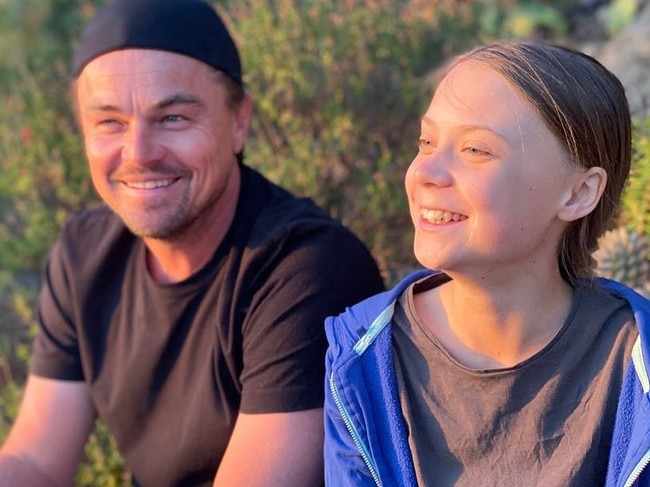
When Leonardo DiCaprio finally won an Oscar in 2016 he pleaded with those watching the Hollywood ceremony “not to take this planet for granted”.
The experience of filming The Revenant had been shaped by “man’s relationship to the natural world”, he said, because the production had been forced to relocate from North America to the southern tip of Argentina in search of snow.
Climate change was “the most urgent threat facing our entire species” and people needed “to work collectively together and stop procrastinating” to mitigate the environmental damage done by humans.
The American actor has now set an extraordinary example of what he meant, raising dollars $US43 million ($A55.2 million) to help restore wildlife in the Galapagos Islands, one of the most important and fragile ecosystems on Earth.
DiCaprio, 46, pledged the funds this week in association with the Galapagos National Park Directorate, Island Conservation, which “prevents extinctions and restores islands”, and Re:wild, a global conservation charity that the actor has co-founded with a group of leading conservation scientists.
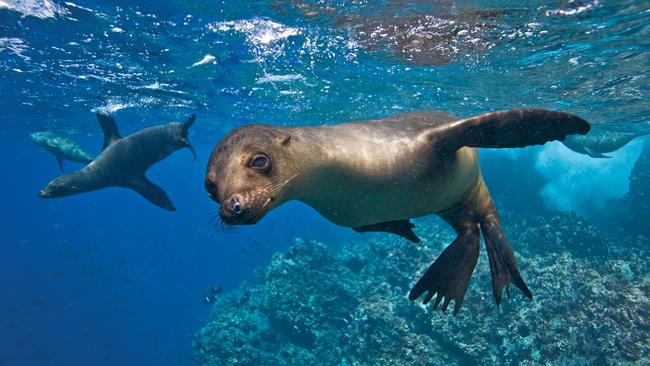
It is named after an environmental strategy for re-establishing vibrant wildlife populations and finding ways to more sustainably integrate people into a natural environment. Re:wild’s approach emphasises the importance of bringing together governments, foundations, corporations and organisations, indigenous communities and individuals to protect threatened environments.
The group declined to confirm what portion of the $US43 million commitment came from the many listed “supporting partners”, including the Ecuadorean and German governments and the Development Bank of Latin America, and what chunk would be taken directly from DiCaprio’s personal fortune, accrued during more than two decades as one of the best paid stars in Hollywood and through multiple successful property investments.
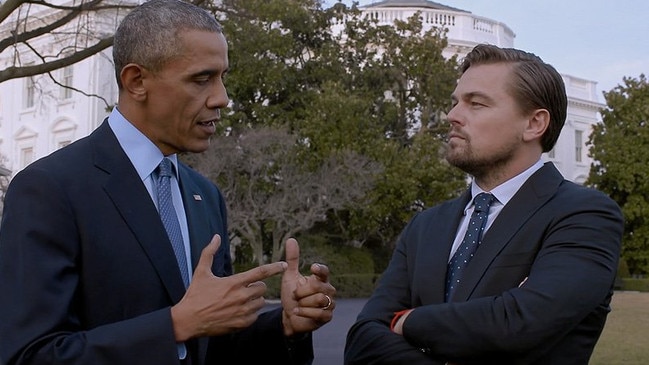
Nevertheless, the size of the investment is expected to make far-reaching changes possible.
Work will begin in the remote Pacific archipelago 600 miles off the coast of Ecuador where, in 1835, Charles Darwin’s observations of local finches led him to begin formulating the theory of evolution by natural selection that later underpinned his work On the Origin of Species.
Among the rewilding projects that will be funded in the Galapagos Islands are a captive breeding program to prevent the extinction of the pink iguana, a marine resources protection scheme to boost eco-tourism — which is critical to the local economy — efforts to restore Floreana Island, which is home to 54 threatened species, and efforts to reintroduce 13 locally extinct species, including the Floreana mockingbird, which was described by Darwin.

Beyond that the vision is to rewild not only the Galapagos Islands but all of Latin America’s Pacific archipelagos, from Mexico down to Chile.
DiCaprio has been a prominent environmental champion for many years and has given more than $US100 million in grants to various projects and programs, and has addressed the United Nations about the threat of ecological destruction. His best-known films include Titanic (1997), The Aviator (2004), The Wolf of Wall Street (2013) and What’s Eating Gilbert Grape (1993), for which he received his first Oscar nomination.
On social media, where his biography describes him as an “actor and environmentalist”, DiCaprio wrote on Monday that he had travelled to the Galapagos Islands and “met with Paula Castano and other environmental heroes in Ecuador working day in and day out to save one of the most irreplaceable places on the planet”.
“Around the world, the wild is declining,” he continued. “We have degraded three quarters of the wild places and pushed more than one million species to the brink of extinction.
“More than half of Earth’s remaining wild areas could disappear in the next few decades if we don’t decisively act. Fortunately, conservation leaders like Paula are showing us that it is not too late to reverse this alarming trend … The environmental heroes that the planet needs are already here. Now we all must rise to the challenge and join them.”
Castano added: “Time is running out for so many species, especially on islands where their small populations are vulnerable and threatened.
“We need catalytic investments like the one announced today to replicate our successes in the Galapagos and elsewhere.”
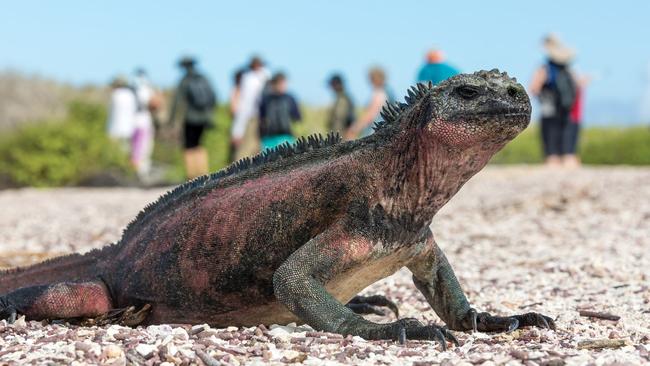
-
The descent of Darwin’s Arch
Darwin’s Arch, a rock that was a symbol of the Galapagos Islands, has collapsed because of natural erosion and is now two pillars, Stephen Gibbs writes.
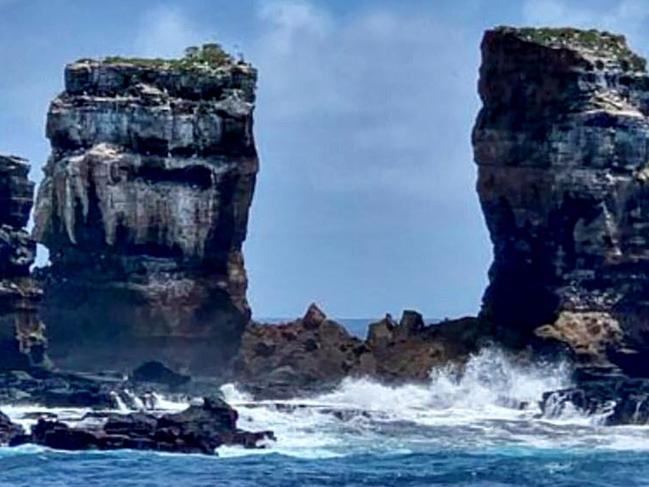
The arch and a nearby uninhabited island were both named after Charles Darwin, whose study of flora and fauna on the archipelago in 1835 deeply influenced his theory of evolution.
The Galapagos Islands, 600 miles west of mainland Ecuador, are a UNESCO world heritage site famed for their plants and wildlife, including a marine iguana. Hammerhead sharks, dolphins and manta rays can be seen in the clear Pacific waters around Darwin’s Arch, which was itself formed by erosion. Its collapse on Monday was witnessed by scuba divers on a boat near by.
Ecuador’s Ministry of Environment said the collapse was purely down to the natural passage of time, though UNESCO had previously warned that the archipelago was vulnerable to warming waters and the more powerful storms and currents caused by climate change. The weather pattern El Nino, described as having a “bulldozer” effect in the eastern Pacific, has become more frequent.
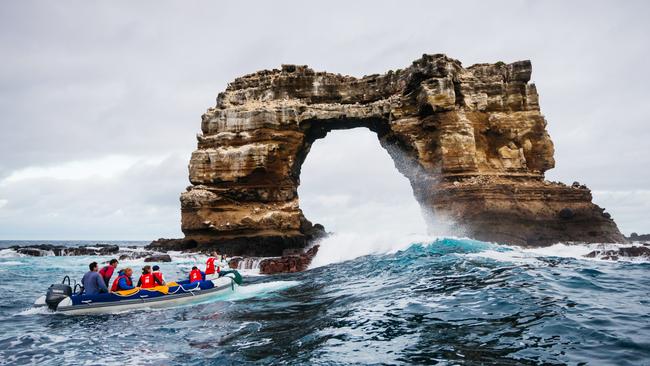
— THE TIMES

To join the conversation, please log in. Don't have an account? Register
Join the conversation, you are commenting as Logout